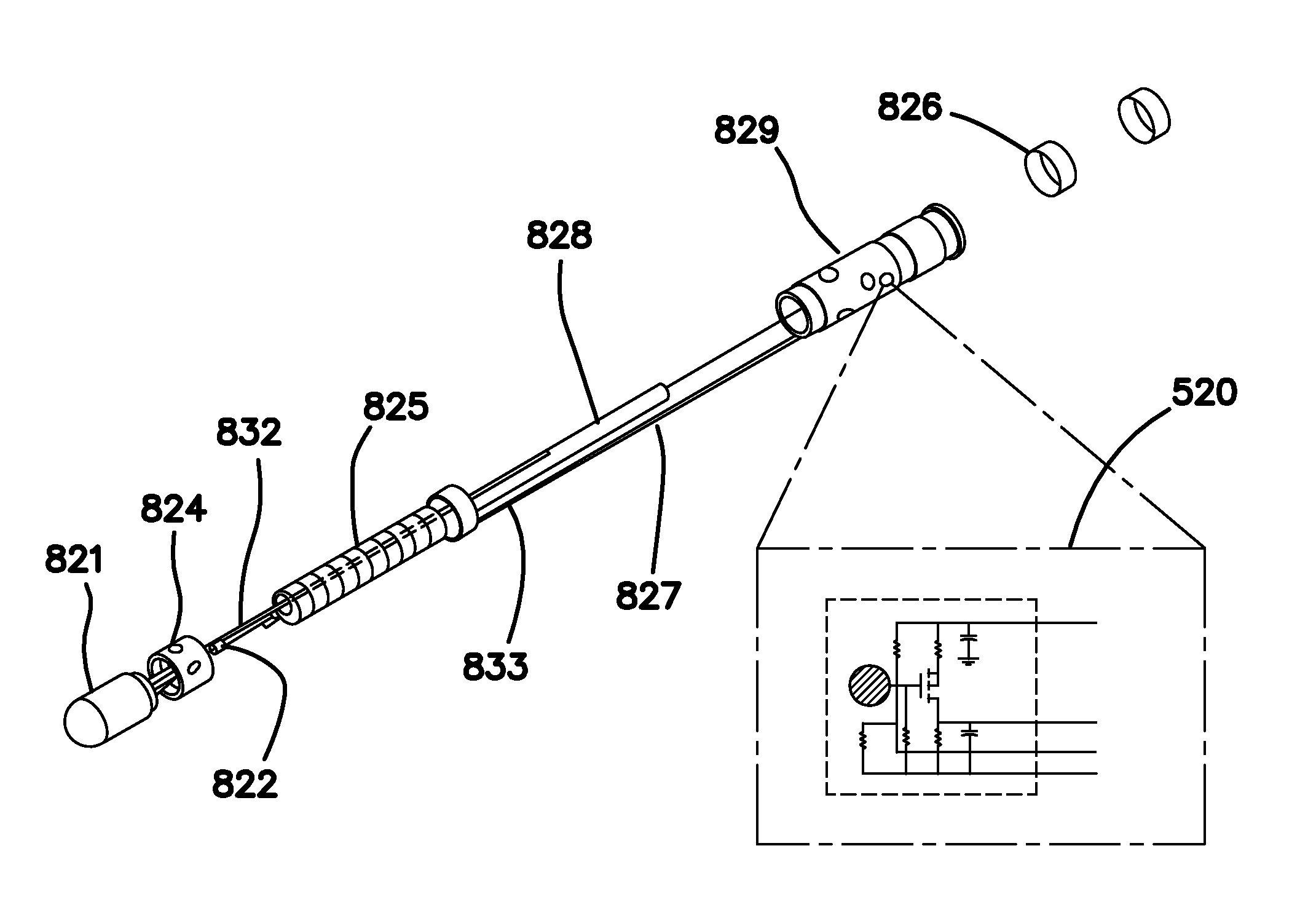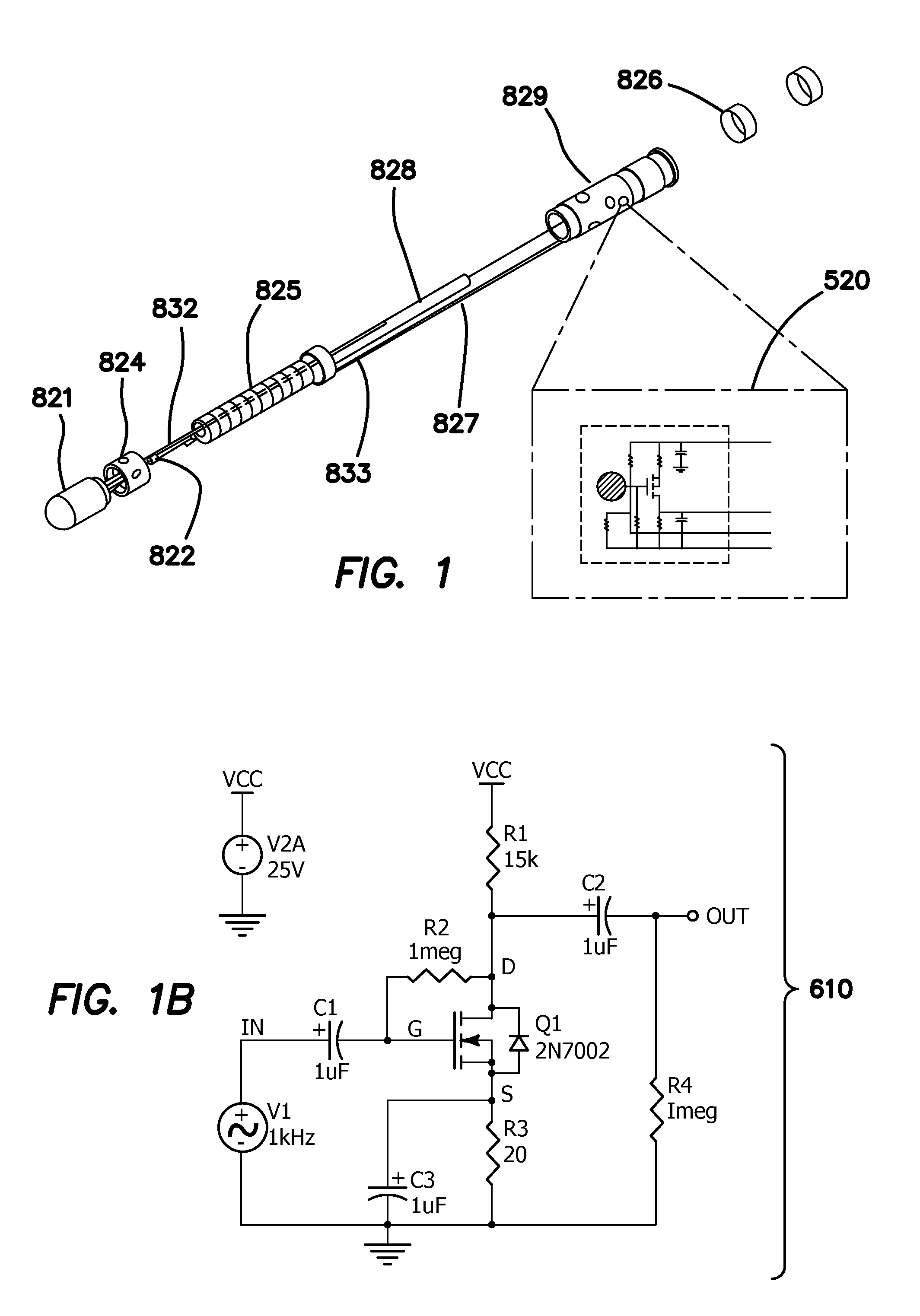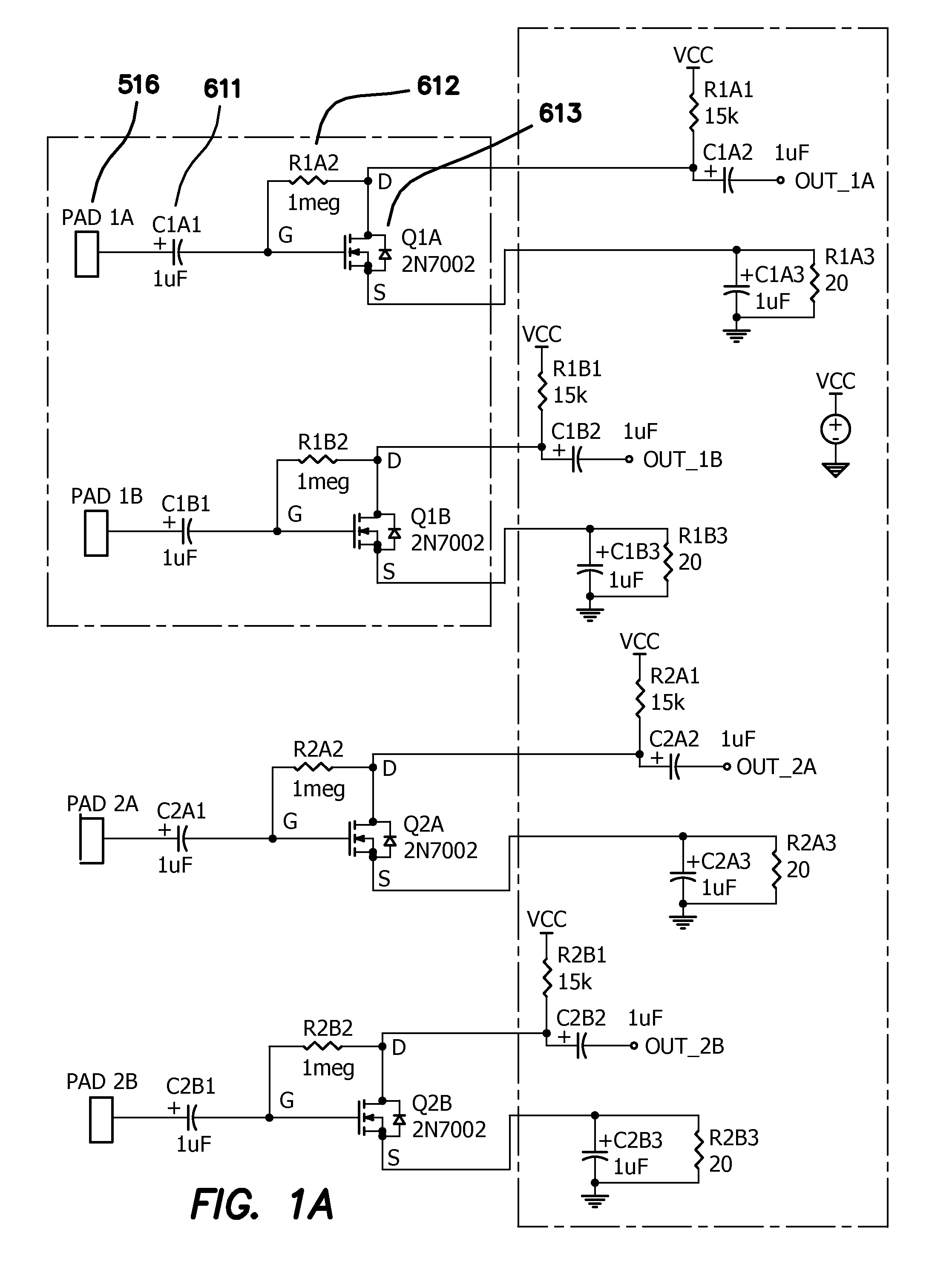Method and apparatus for magnetically guided catheter for renal denervation employing mosfet sensor array
a technology of mosfet and sensor array, which is applied in the field of magnetically guided catheters, can solve the problems of current art of manipulating the distal end of the catheter, methods and apparatus are subject to limitations, and suffer from the same limitations as prior art, so as to increase or decrease the total peripheral resistance and cardiac output
- Summary
- Abstract
- Description
- Claims
- Application Information
AI Technical Summary
Benefits of technology
Problems solved by technology
Method used
Image
Examples
Embodiment Construction
[0176]FIG. 1 is an orthographic representation of the catheter 800, the assembly comprises an ablation tip 821, an irrigation manifold irrigation tube 828, a plurality of articulated permanent magnets 825, an electrode(s) 826, a sensor array holder 829, and at least one MOSFET sensor 520. In one optional embodiment of the invention, the catheter assembly 800 is configured to perform diagnostic as well as therapeutic procedures, by incorporating an irrigated manifold 824 and RF ablation tip 821, so as to enable the physician to map and ablate the desired site without the need to change tools or catheters. The use of the MOSFET sensor array 500 (seen in FIG. 4) at the site enables the operator to identify the specific site of electrical activity, i.e. bioelectric potential as well as ganglionic nerve impulse activity, while recording such event so that the operator can chose to apply the necessary RF energy to ablate which will clinically result in denerving the site or create a lesio...
PUM
 Login to View More
Login to View More Abstract
Description
Claims
Application Information
 Login to View More
Login to View More - R&D
- Intellectual Property
- Life Sciences
- Materials
- Tech Scout
- Unparalleled Data Quality
- Higher Quality Content
- 60% Fewer Hallucinations
Browse by: Latest US Patents, China's latest patents, Technical Efficacy Thesaurus, Application Domain, Technology Topic, Popular Technical Reports.
© 2025 PatSnap. All rights reserved.Legal|Privacy policy|Modern Slavery Act Transparency Statement|Sitemap|About US| Contact US: help@patsnap.com



